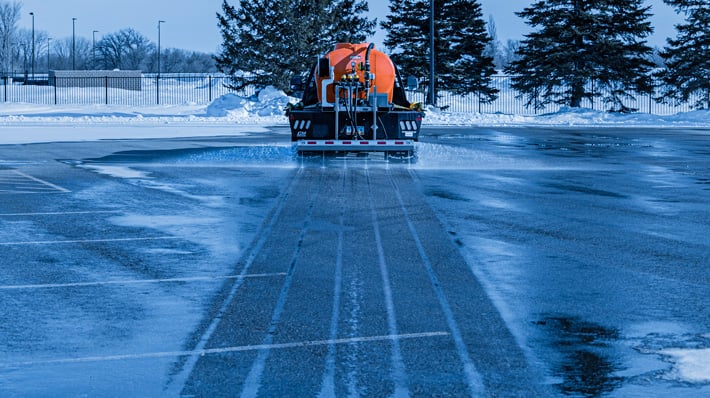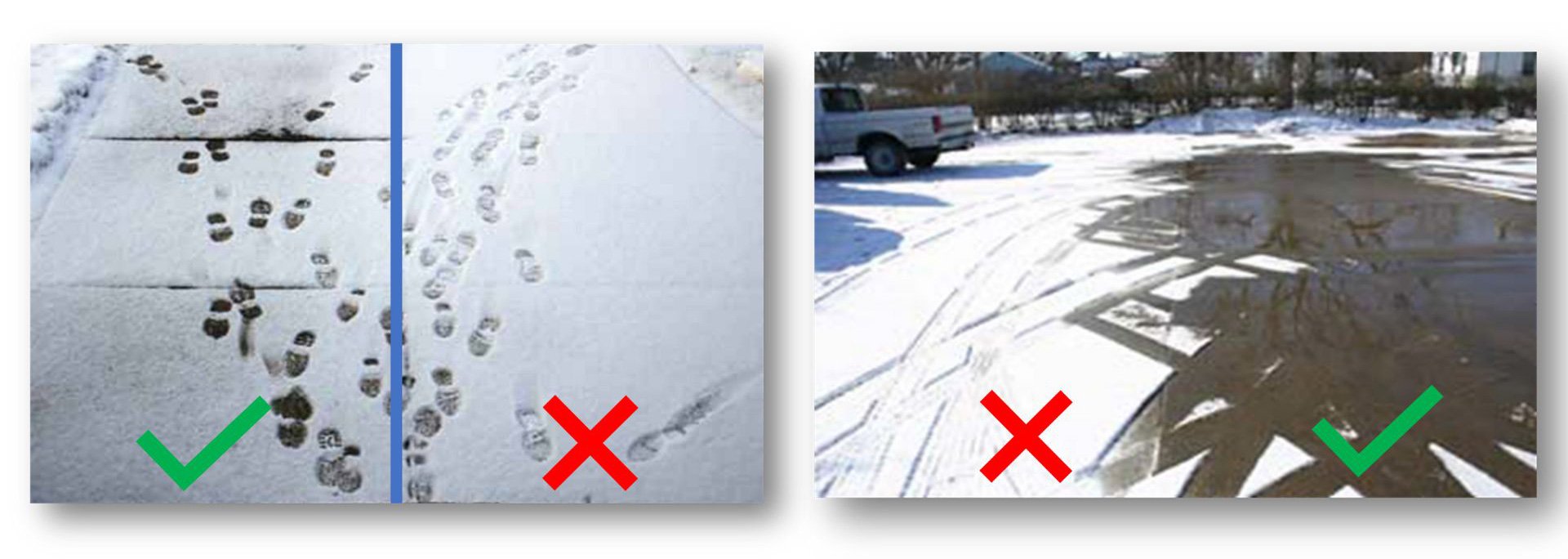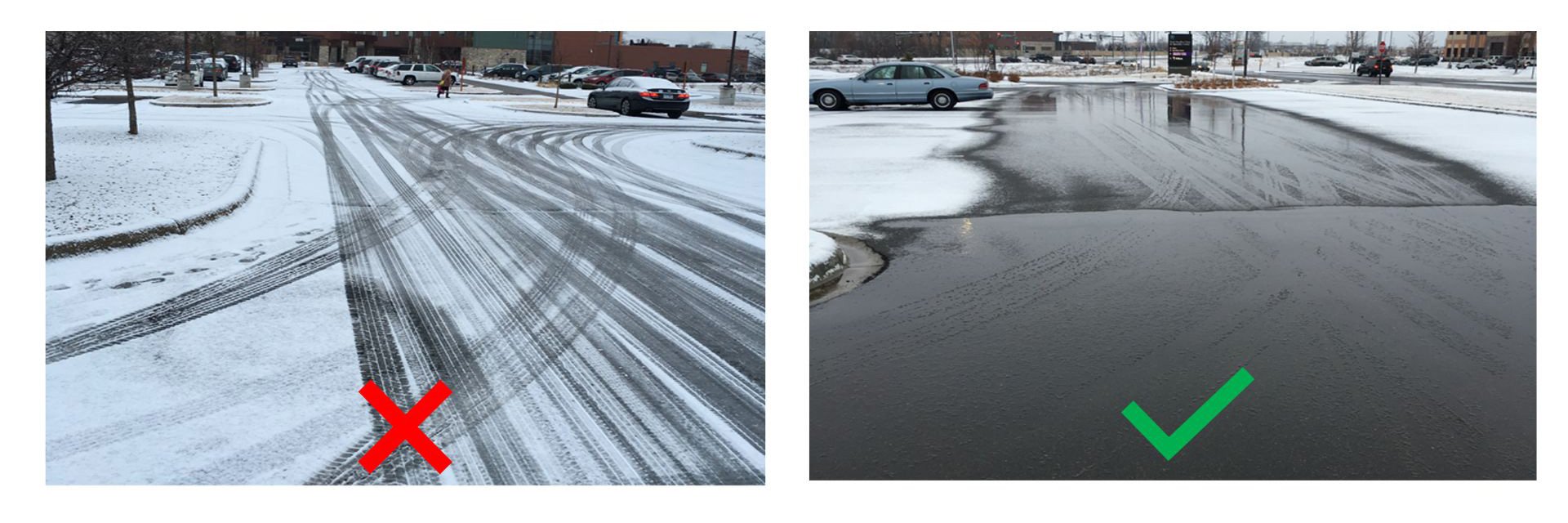
There are numerous ways to deal with snow and ice. Snowfighters nationwide are constantly experimenting with different chemical mixtures and methods to find what works best for them and stick with it. However, as snowfighters, we know there is always room for improvement, and brine is the ultimate tool to achieve that. Take a look at these photos that show a comparison between roads with and without brine pretreatment.
Example 1

It’s important to remember that the purpose of anti-icing is literally in the name, to prevent ice from forming. Take a look at these two photographs that were taken in the same area during the same storm. You can see in this example that when you forego an anti-icing method like a Direct Liquid Application (DLA) pretreatment with brine, the snowfall can get compacted into the ground via cars and foot traffic. Ultimately, the more traffic an untreated area gets, the harder and deeper the ice will get.
So when we anti-ice via pretreatment, we actually keep that ice from bonding to the pavement. In fact, If the temperatures are warm enough, as you see in this example, your pretreatment will actually melt the snow. However, the amount of snow you’ll melt will depend on several variables.
The main takeaway is that anti-icing prevents snow and ice from bonding to the pavement. This is true for sidewalks, parking lots, and roadways.
Example 2

Here’s another example of this in action. These two pictures were taken in the same lot during the same storm. On the right, that portion was pretreated with brine. On the left side, you can see that the snow is packing down into the pavement. Whereas on the right, there’s no snow in sight.
It’s possible to get this result without using liquid, but with brine and a DLA approach, you have the added advantage of the brine going down into the surface. If you use a granular product, you run the risk of traffic and wind blowing it away and affecting the efficiency of its melting.
That’s why at Camion, we always recommend a DLA approach to pretreatment. Applying brine directly to the surface is safe from traffic and rainfall because it has made its way into the surface and doesn’t blow away as rock salt would.
Example 3

This third example drives home the fact that pretreating using a DLA method can work wonders for your operation. On the left, you have an area that was not pretreated; as a result, you have some chunky ice on the road. It’s evident by these pictures, which were both taken on the same lot, that anti-icing is safer and more effective at snow and ice removal.
Also, keep in mind the cost benefits at play here. In this example alone, this snowfighter used less material pretreating with the DLA application than if he simply de-iced the compact snow that formed. Anyone can achieve this result with brine. Compared to rock salt, you can effectively anti-ice an area using only one-quarter of the material at one-tenth of the cost.
We understand that all snowfighters have their own tried-and-true methods for managing snow and ice. But if you’re looking for a safer, more effective, and money-saving change in your arsenal, make the switch to liquid brine and see what DLA could do for your operations. Learn everything you need to know to conquer every storm in our informative snow and ice control blog.



